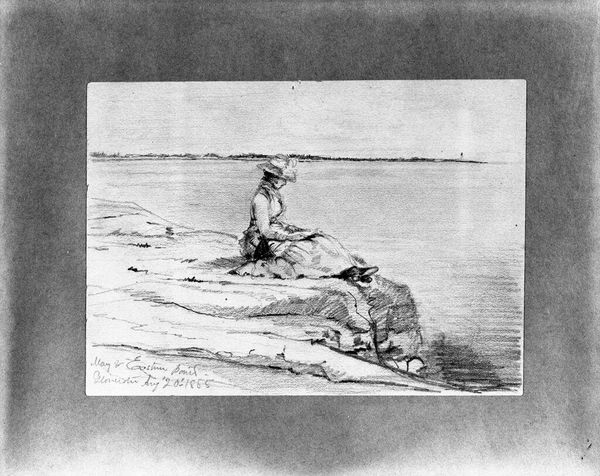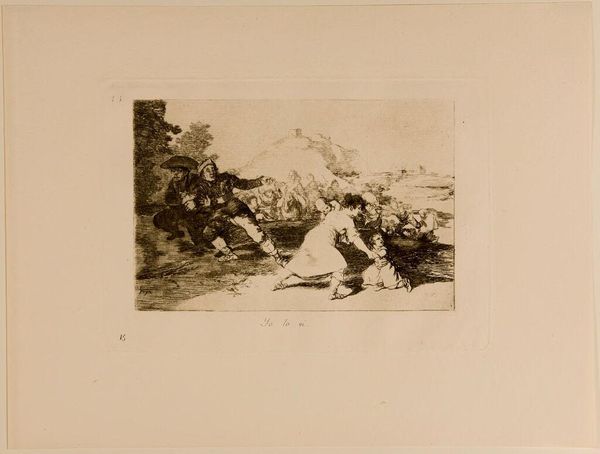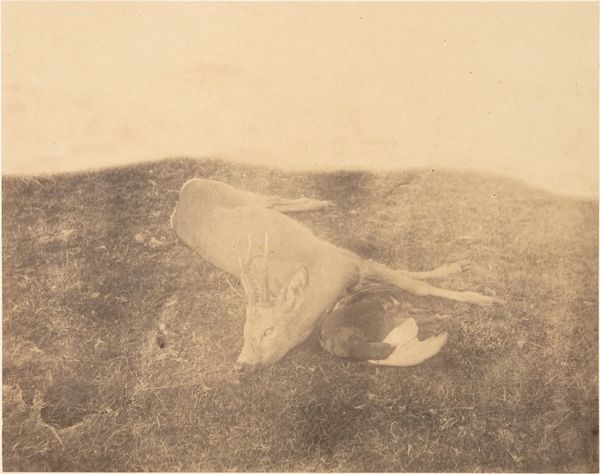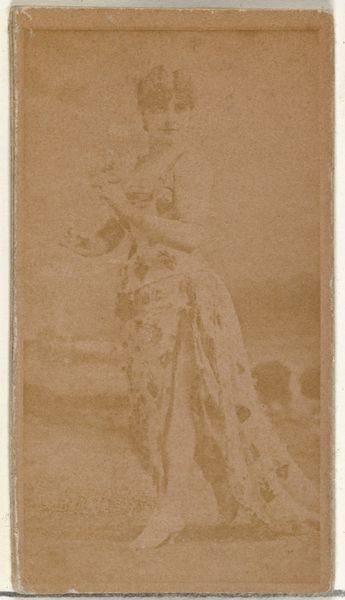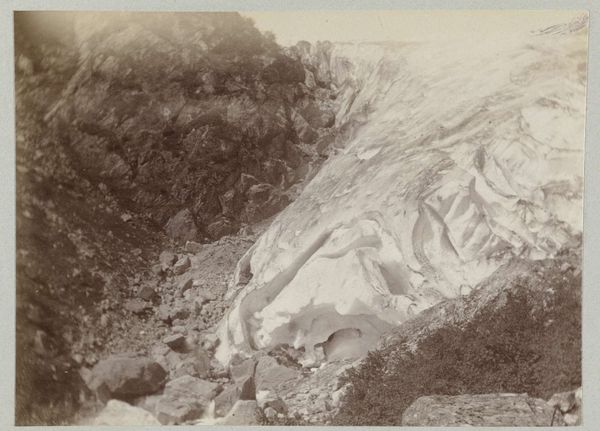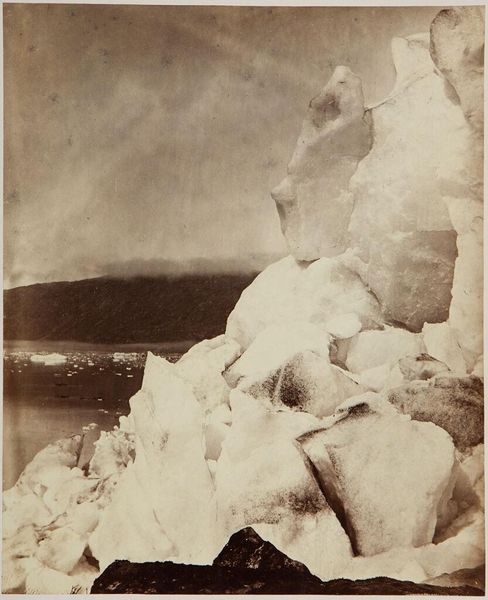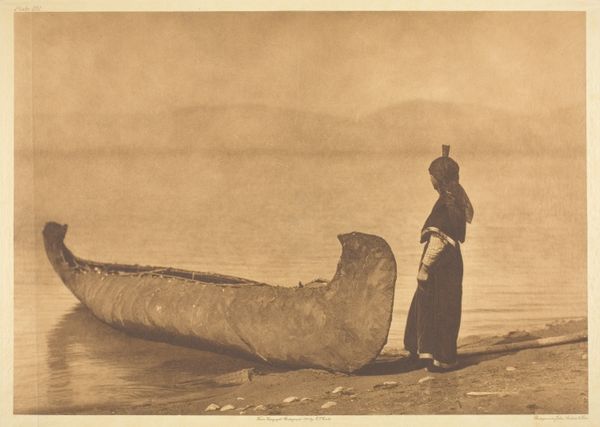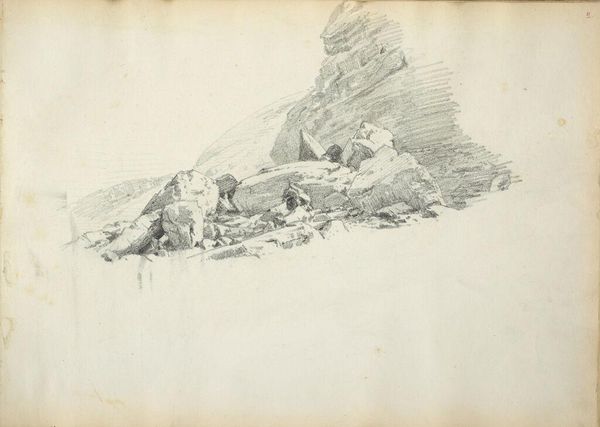
drawing, etching, paper, ink
#
portrait
#
drawing
#
impressionism
#
etching
#
pencil sketch
#
landscape
#
charcoal drawing
#
paper
#
ink
#
pencil drawing
#
charcoal
Dimensions: 21 x 29.8 cm
Copyright: Public domain
Curator: Louise Abbéma's "Femme assise sur un rocher," created in 1874, presents a serene image. This work on paper, rendered with ink and etching, really captures a contemplative moment. Editor: Immediately, I notice how Abbéma plays with textures and line weights. The rocks in the foreground possess such stark, defined angles compared to the softer, hazy seascape and figure. Curator: Indeed. Note the contrast in application; the detailed hatching brings forward the mass of rocks while the delicate network of lines softens the portrayal of the subject and dissolves the background in misty air. Given the context of artistic training and salons of the time, one might expect greater fidelity to detail. Editor: I'd say the haziness contributes significantly to its feeling of distance. What is striking is how the composition guides the eye. The strong diagonal of her skirt directs you into the landscape; almost as if she's an integral part of it. I imagine audiences were beginning to grow tired of seeing these leisure scenes dominated by male protagonists and must have greeted a depiction like this with intrigue. Curator: Absolutely. Considering the etching technique—how the artist manipulates depth by layering ink—this allows the details on the figure to be diminished so it’s not necessarily the portrayal of HER but of an evocative emotional state which also democratized what kinds of pictures would adorn the walls. The application of this printmaking technology contributes to a subtle statement about individual consciousness within its wider landscape setting. Editor: That's a sharp reading. Considering the society that enabled and consumed art like this, could we interpret the artist’s choices about her stance as a form of social commentary? To what degree would the elite appreciate this visual metaphor and its underlying nuances? Curator: Yes, that question brings forward discussions about the role of public exhibitions as the ground where new styles emerge; and one could assert that as she gains fame, the very process changes from artist to professional figure as well and with an understanding that they could shape social values. Editor: Precisely. And her treatment of materials serves this perfectly. It reveals the cultural mindset shaping production and audience consumption. This art serves as social exchange as well as contemplation of modern female identities within historical milieus and power dynamics. Curator: Thank you; this encounter shows why “Femme assise sur un rocher” still provokes compelling reflections about selfhood versus culture after over one-hundred and fifty years. Editor: Quite so; this piece and her choices in applying the aesthetic truly opens insightful dialogue to appreciate Abbéma’s sensitivity around those tensions!
Comments
No comments
Be the first to comment and join the conversation on the ultimate creative platform.


